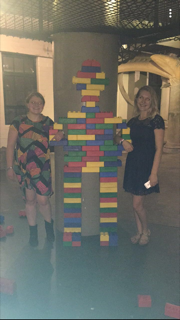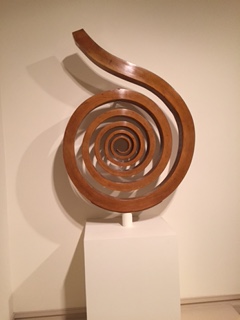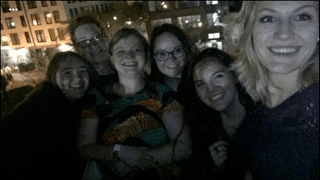I forgot to write that, on Thursday, we went to the St. Louis Art Museum which was an amazing experience. My third session on Friday, Books as Flint: Using Graphic Novels to Spark Political Activism, gave me loads of books I need to read. I filled two pages in my writing journal with graphic novels I need to read and buy for my classroom library from this session. The speakers at the session also discussed how these graphic novels normalize marginalized voices. Our classroom libraries should include titles about and titles written by marginalized voices. These diverse titles allow students to see themselves in the book, and allow students to familiarize themselves with people who are different from them. Introducing students to diversity within books helps fight ignorance about people who are not like them. Finally, the speakers talked about encouraging people who challenge these books to read the books! We cannot censor everything because real life topics like racism make people uncomfortable. \

My next session, Hey There Young Adults! There’s a World Out There! Using YA lit to Engage our Teens, also provided me with many books to buy and read. Brenden Kiely, Suzanne Young, and Sharon Draper spoke about the books they have written and the books they have coming out soon. They went on to encourage teachers to find the books to place in students’ hands that will make them fall in love with reading. I heard it several times at this conference: Kids do not hate books, we have not been giving them the right books! Teachers have to let students know that the books they like to read are good enough and important. Finally, the speakers talked about setting up a Survivor Book Club where students read and vote books off the island like in the popular show Survivor. Friday night we went to St. Louis City Museum where we were all able to embrace our inner child! We climbed, explored caves and giant whales, slid down slides including a 10-story slide, and build with giant legos! It was the most fun museum I have ever been to!

Jacqueline Woodson was the speaker at Saturday morning’s general session. Woodson spoke about some very important topics. She told us that every student needs to know they have the right to be in the classroom. She spoke about the gift of picture books for struggling readers, and how we need to legitimize nontraditional forms of literacy. We have to give students access to books, and we have to read about history so that we do not repeat it. Finally, we have to give voice to the voiceless.
My next Saturday session was Empower Your Student Writers Using Effective Feedback and Tech Tools. The first thing the speakers talked about in this session was getting students used to the idea of first draft suckage. Too often, we insist that students write their first draft as though it needs to be perfect. We have to help students to see that first drafts are made to suck, and that through revision, great writing can be found. We cannot look at products in isolation. We have to look at the student and at progress in writing. We have to emphasize the writing process. Peer feedback needs to be taught to students because they often associate feedback with editing. Peer feedback does help both the student giving and the student receiving the feedback, but it does not help them if they are looking at grammatical errors while giving feedback. Teachers should correct one or two grammar issues within a piece of writing rather than marking up the entire paper with red ink because one or two issues is manageable for students while a paper full of errors is basically a sign to students that they are not good writers and that they should give up. Finally, teachers have to give students ownership of their writing. Students have to know that they can accept and decline the feedback they are given.

Next, I went to the session Interrogating White Privilege in the Trump Era. The first thing that the speakers spoke about was the fact that Midwest, majority white and middle-class communities are places where people think racism does not exist because they do not see racism. The speakers encouraged that teachers talk about intersectionality in the classroom: that we talk about racism in relation to poverty, misogyny, and ableism. We have to supply students with books that address intersectionality. We have to embrace the fact that racism is going to be a topic in which a lot of our students are uncomfortable, but they should be. It takes being uncomfortable to fight internalized, systematic racism that is at the heart of this country. Teachers have to bring up the subject of racism in the classroom, and they need to teach students how to have respectful discussion over topics they are uncomfortable with. We have to force people out of the happy little bubble in which they live their lives. While I saw some problems with the way the topic was presented in this session because it felt to me that they were trying to avoid the actual topic of racism by talking about poverty and misogyny, I did learn a lot from this session and enjoyed the session.
I did not think it would take three blogs to talk about this conference, but I forgot how much was packed into those several days, so more in the next blog!
